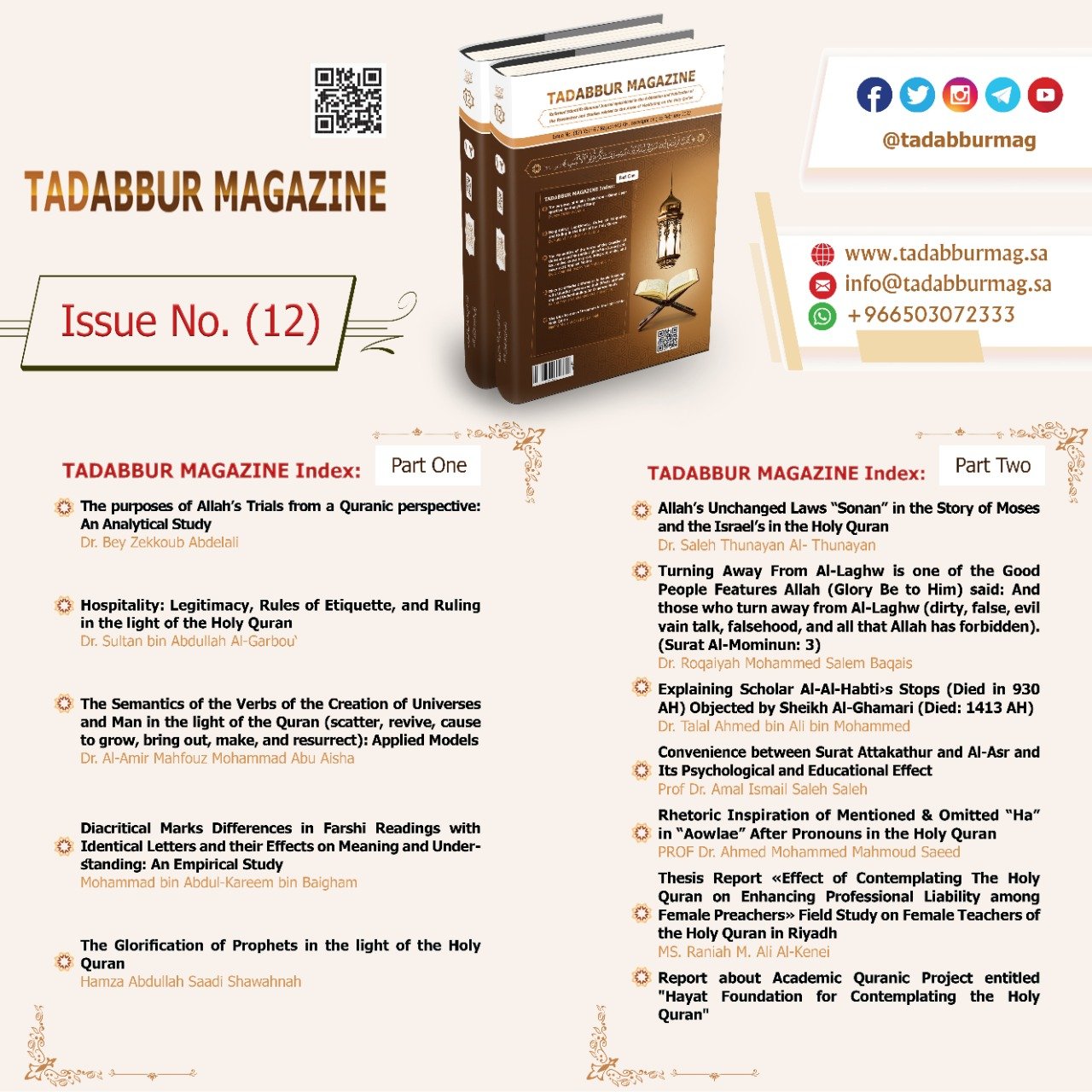The Semantics of the Verbs of the Creation of Universes and Man in the light of the Quran (scatter, revive, cause to grow, bring out, make, and resurrect): Applied Models
Main Article Content
Abstract
The study of the Quranic verbs that refer to creation and origination is a complex topic that receives considerable attention in Islamic thought on the basis that they are attributed to Allah, the Almighty. They contain axioms and lessons for every responsible adult. These verbs also reveal the inimitability of the Quran as the top miracle of the Prophet’s that will last until the Day of Resurrection. This paper is entitled "The Semantics of the Verbs of the Creation of Universes and Man in the light of the Quran (scatter, revive, cause to grow, bring out, make, and resurrect): Applied Models"
- The rationale for studying the verbs of creation and origination: the study is carried out for science and religious purposes because some of our contemporary young people have become less faithful and Islamic thought is in dire need of elucidating the implications and meanings of these verbs.
- The main objective of the study is to show evidence of belief in Allah, the omnipotent who creates all beings and creatures out of pure nothingness.
The study uses the descriptive analytical method.
- The findings of the study: it reaches some conclusions that prove creeds, bring to light the divine bestowals and blessings and make a compelling response to those who repudiate Final Resurrection.
- The study recommends that all researchers should explore the Quranic vocabulary in general and the verbs denoting creation and origination in particular.
Downloads
Article Details
Conference Proceedings Volume
Section

This work is licensed under a Creative Commons Attribution-NonCommercial 4.0 International License.
Indicating to the intellectual property, copyrights, and open access right:
According to the Budapest Initiative 2002; tadabbur Journal, which is issued by Khibrat Taibah For Research and Studies in Medina, provides free open access to its publications, and applies the Creative Commons license:
Attribution- Non-Commercial 4.0 International (CC BY-NC 4.0) for the works it publishes from peer-reviewed scientific research and reports, which are freely available on the Internet, and which allows any user to read, download, copy, and distribute (Convert), print, search, or create links to the full texts of the journal’s research and publications, and analyze them in an automatic manner for discovering them, sending them as software data, or using them for any other legal purpose, without financial, legal, or other technical barriers beyond those related to Internet access.
It also highlight that the only barrier to reproduction and distribution, and the only role of copyright in this field, is the necessity of granting the authors of the journal’s research and reports and the publisher the journal; Control over their works, and the right to official recognition and reference citations.





